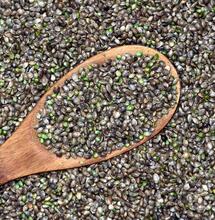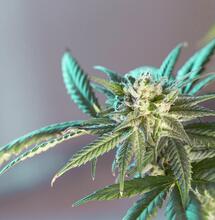BetterBuds with Mr. Bill: Should I Remove Cotyledons before Transplanting?
.jpg)
Mr. Bill, our plant fix-it guy, informs a curious grower about cotyledons and re-potting.
Mr. Bill is ready to assist you by drawing upon over twenty-eight years of active grow shop experience - including answering growers' questions about the hydroponic industry. Before Mr. Bill opened his first store he worked in the agricultural industry for five years, growing tobacco.
Hello Mr. Bill,
When I transplant this seedling to a bigger pot, what do I do with the first two little petals at the bottom of the plant - do I leave them alone and just plant it the same? Help appreciated.
Thanks,
Peter
Hi Peter,
The first part of the plant to come out of the growing medium are the cotyledons; these play a very important part in a young plant's beginning of life. Cotyledons or 'seed leaves' provide young plants with all the nutrition they need; they are basically what we call a nut. Once the cotyledons have broken through the surface of the growing medium, they start photosynthesis and the meristem (growing tip) grows out the base of the cotyledons, producing leaves that allow further photosynthesis. All further growth of the plant occurs through the meristems.
If the cotyledon comes out of the growing medium more than a couple of inches, you will want to lower the light source or get it out of the shade to prevent stretching. You may also cover the stem with more growing medium. If the plant grows too tall and the cotyledon is out of the soil by more than four inches, the plant will likely fall over and die.
Do not remove the cotyledons - allow them to wither and fall off of the plant. The cotyledons are very important to a plant's establishment.
My advice is to leave the cotyledons alone. They will usually turn yellow, then brown, before dying off. If they don't naturally fall off, then pinch them off. They serve no function for mature plants, as they are usually shrunken and discolored or dried by the time that the plant is well established.
Pinching or cutting off dead leaves is actually good for the plant. Always use a clean, sharp blade, or thoroughly wash your hands and use a thumbnail to pinch off the dead leaf. Cutting it leaves an open wound, through which vital moisture may be lost. Pinching-off has the added benefit of sealing the vessels through which food and water are distributed throughout the plant, so if you just cut them off, make sure that you pinch the cut end between your fingertips to gently seal off the wound. Healthy leaves are not usually removed from the plant, as these are the photosynthesis factories that allow food to be processed into energy, making your plant grow and be vigorous. Dead or dying foliage provides a vulnerable point-of-entry for many pathogens, so make sure that you regularly remove 'ugly' leaves from your plants.
Also, you can re-pot around this stage. The first 'true' leaves (the serrated ones that look like weed leaves) will appear, after the cotyledons, as single 'fingers' on opposite sides of the stalk. 'Palmate' (having the appearance of a hand with fingers) sets of true leaves appear after the initial single-bladed true leaves. As soon as the seedling has two or three complete sets of true leaves, you can transplant.
Waiting too long to transplant may induce stretching, in addition to the light issues previously mentioned. Gently remove the seedling from its pot and VERY gently loosen the soil around the roots. Compacted soil can prevent healthy root spreading, but be careful not to squeeze or snap any of the roots. Healthy roots = healthy plants!
You can transplant into a larger pot, but be careful not to put a very small plant into a huge pot -- this wastes time, water, energy and food. Re-pot every few weeks indoors, maybe once per month outdoors (if growing in pots, which I recommend, when possible), with a final push into a large pot before the plants will either be force-flowered or flower naturally. They should never be re-potted in the flowering stage, as the plant's energy is redistributed towards flowering and you can seriously stress them out by doing so.



